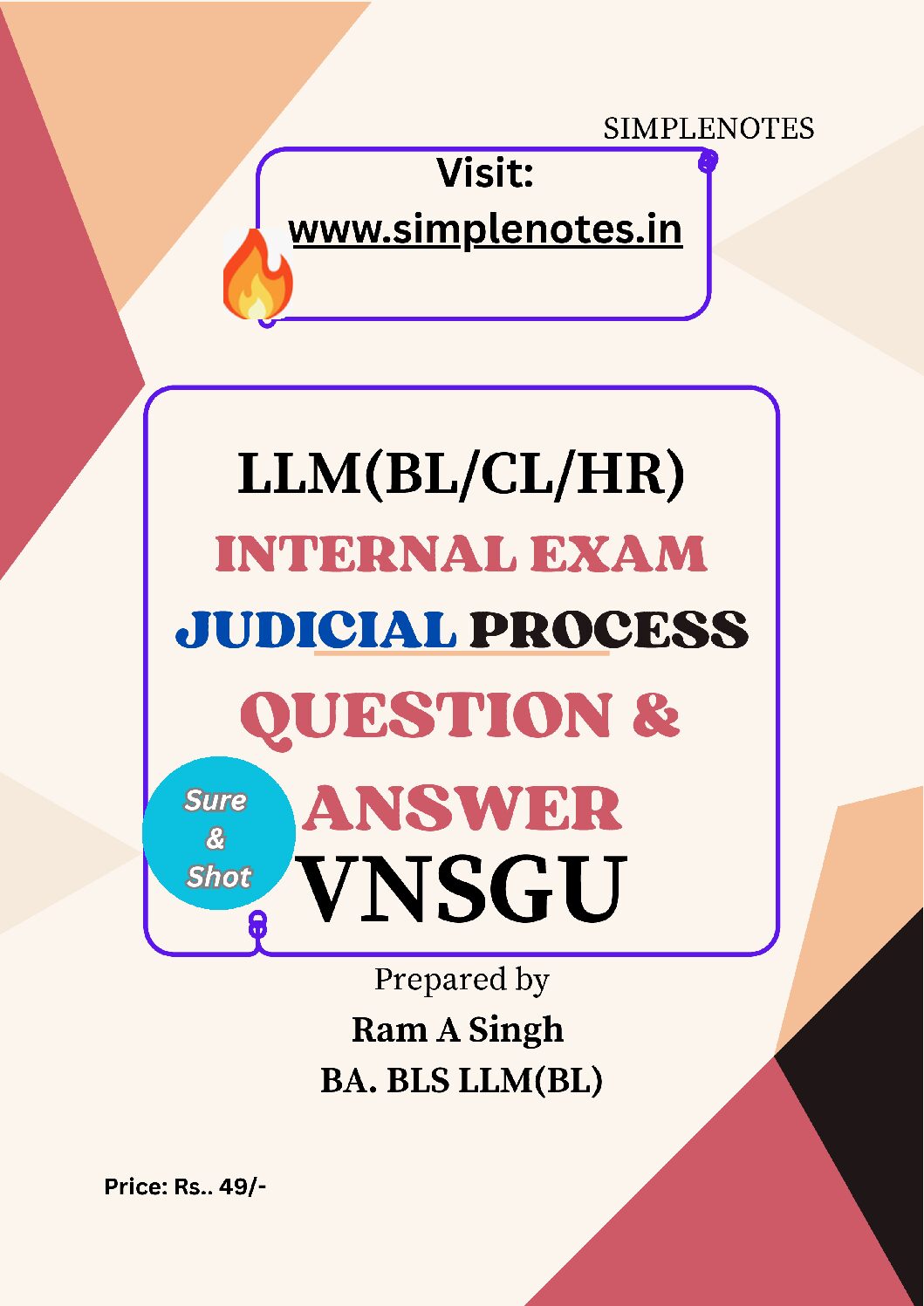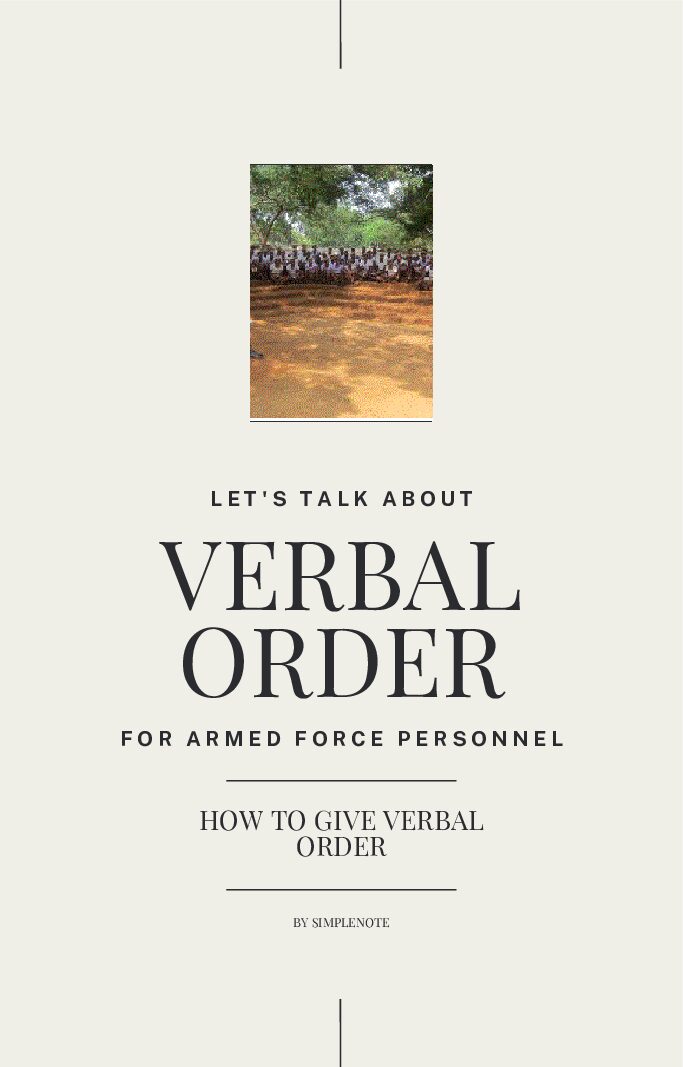Justice and Law ,Not Always the Same: Introduction:
Why Justice Needs Law: Justice and law are two words we often hear together. Many people think they mean the same thing. But they do not. Law is a written set of rules. Justice is the feeling of fairness behind those rules. Sometimes, they match. Sometimes, they do not.
Synopsis
The phrase “Justice depends upon law for its realization but it is not only according to law” tells us something important. It means that justice often needs law to happen. But justice is not always limited to what the law says. It can go beyond it.
Let’s take a simple example. Suppose someone steals food because they are starving. The law says stealing is wrong. But justice might ask: Why did they steal? Was it survival? Should they be punished or helped? In this case, justice may not follow the law word-for-word.
This is not just theory. Courts and judges often face this question in real life. When law becomes too rigid, it can feel unfair. That is when the “justice is not always according to law” becomes true. Law is a tool. But it is not the only path to fairness.
You may also like this : From Locus Standi to PIL: Understand in 10 points, How Indian Judiciary Changed Access to Justice
Justice is a human value. Law is a human creation. When the two work together, society becomes better. But when law forgets justice, people suffer. Law should serve justice—not the other way around.
For law students and lawyers, this difference is very important. You will not only learn the law. You must also learn when the law is not enough. You will face situations where legal rules clash with what feels fair or right. In those moments, your understanding of justice will guide your choices.
In this blog, we will go deeper into this topic. We will explore how justice depends on law, but how it also goes beyond law. We will study legal thinkers, famous judgments, emotional stories, and different legal systems. You will see how law and justice work together—and where they don’t.
By the end, you will have a strong understanding of this core idea. And you’ll be able to use it in exams, moot courts, and real-life legal practice.
Let’s begin the journey where law meets justice—but doesn’t stop there.
Positive Side: 5 Ways Law Helps Realize Justice
Justice is not possible without law. Law gives justice its power. Without law, justice would be just an idea. In this section, we will explore five strong reasons why justice depends on law for its realization.

1. Law creates order and structure
In any society, law keeps things in order. Without laws, there would be chaos. People wouldn’t know what is right or wrong. Law tells us the rules, and justice is found by following them. For example, traffic rules protect lives. Justice here means safety for everyone.
2. Law protects individual rights
The Constitution of India gives every citizen certain rights. These include the right to equality, freedom, and protection. If someone’s rights are violated, they can go to court. This shows how justice depends on law to protect human dignity. Without legal rights, justice cannot be claimed.
3. Law gives equal treatment to all
One of the most important parts of justice is fairness. The law treats rich and poor, men and women, all equally in theory. If the law is fair and applied correctly, justice is possible. Courts use written law to make sure that no one is above the rules.
4. Law allows people to seek justice through courts
If someone is wronged, they can go to court. The courts apply the law to give justice. Law is like a map. It tells the judge how to move forward. A person can demand justice only when there is a legal process. This is why justice depends upon law for its realization.
5. Law evolves to bring justice
Law is not fixed forever. Courts, especially in India, use tools like public interest litigation (PIL) to bring justice to more people. The law changes with time, society, and needs. This flexibility shows how justice and law grow together. It also proves that law and justice work together for the common good.
Without law, justice would remain only a dream. But when laws are fair, clear, and followed properly, justice becomes real. In India, many judgments have shown how justice was achieved only because the law allowed it.
Even though law is not perfect, it provides the path that justice walks on. For any law student or young lawyer, this understanding is key. Before criticizing law, learn how much it does to support fairness and equality.
In the next section, we will look at the other side: when justice is not always according to law, and how strict laws can sometimes lead to unfair results.
You may also like this : Judicial Creativity Explained: Tools, Techniques, and Global Case Studies
Contrarian View: Why Law Can Fail Justice
Law is important. It creates a system. It provides rules. It protects rights. But sometimes, law alone is not enough. In many situations, following the law strictly leads to unfair or unjust results. This is where we must admit the hard truth, justice is not always according to law.
Let’s understand why.
1. Law can be outdated or rigid
Laws are made at a certain time. But society changes. If laws are not updated, they may no longer match what is fair today. For example, many colonial-era laws in India remained for decades. Some of them were unfair in today’s democratic society. In such cases, justice depends on law, but the law itself needs change.
2. Law can be misused
Even a good law can be twisted. People in power may use legal rules to target others. For example, preventive detention laws or sedition charges can be used against innocent people. The law is followed, but justice is not served. This proves again that justice is not only according to law.
3. Legal formalism ignores context
Sometimes, courts follow the letter of the law without thinking about the spirit of the law. This is called legal formalism. It means only applying what is written, even when the result feels wrong. For instance, denying bail to a poor person just because the law says so—even when they are not a threat—feels unfair. Here, justice and law do not work together.
4. Famous dissents show how law can miss justice
Judges have disagreed with the majority when they felt law failed justice. One example is the ADM Jabalpur v. Shivkant Shukla case during the Emergency in India. The majority said people had no right to life under law during Emergency. But Justice H.R. Khanna disagreed. He stood for justice over legal text. Later, his view was accepted by history. This is a strong example that justice is not always according to law.
5. When law and morality clash
Sometimes, the law allows something, but morality says it’s wrong. Think about apartheid in South Africa or racial segregation laws in the U.S. These were “legal” at the time, but deeply unjust. Dr. Martin Luther King Jr. said, “An unjust law is no law at all.”
So what do we learn here?
Law is a tool, but not always a perfect one. It needs human judgment, compassion, and courage to ensure justice. Laws must be questioned when they cause harm. Justice depends on law, yes, but justice also rises above it when needed.
Case Studies: 4 Times Justice Triumphed Over Law
Sometimes, the law is not enough. Sometimes, judges and courts must go beyond written rules to deliver justice. In this section, we will look at four powerful case studies that prove justice is not always according to law, but justice can still win. These examples show how justice depends on law to some extent, but is not limited by it.
1. Kesavananda Bharati v. State of Kerala (India, 1973)
In this historic case, the Supreme Court ruled that the basic structure of the Constitution cannot be changed even by Parliament. At the time, there was no written rule saying this. The Court created the “Basic Structure Doctrine” to protect democracy and individual rights.
Why it matters: Justice went beyond the black and white law. The Constitution was saved. This shows how justice and law work together, but justice leads the way.
2. Brown v. Board of Education (USA, 1954)
In this case, the U.S. Supreme Court struck down racial segregation in public schools. The existing law allowed “separate but equal” schools for Black and white students. But the Court said segregation is inherently unequal, and violates the U.S. Constitution.
Why it matters: The judges rejected outdated laws and used justice as their guide. This is a clear case where justice triumphed over law.
3. Vishaka v. State of Rajasthan (India, 1997)
This case came after a woman was gang raped while working. At that time, there were no Indian laws to protect women at the workplace. The Supreme Court used international conventions and constitutional rights to create guidelines against sexual harassment.
Why it matters: There was no law. But justice still happened. The Court filled the legal gap with values. This proves that justice depends upon law for its realization, but also grows beyond written law.
4. Nuremberg Trials (Post World War II, Germany)
After World War II, Nazi officials were tried for war crimes. But many of their acts were “legal” under German law at the time. The judges applied principles of natural justice and universal morality to punish them.
Why it matters: The trials rejected unjust laws and punished crimes against humanity. This was justice beyond legal texts.
These four examples from different countries and times show one truth again and again: Justice is not always according to law. But when brave judges rise above outdated or harmful rules, justice can still be served.
You may also like this : Is the judiciary in India independent of the executive?
Cross-Jurisdictional Insights: How Different Countries Balance Justice and Law
Justice and law do not look the same in every country. Each legal system has its way of understanding the relationship between fairness and rules. In this section, we will explore how four major legal systems—India, the United States, the United Kingdom, and the European Union—deal with the idea that justice is not always according to law.
1. India: Justice through Constitutional Morality and PILs
India’s legal system combines written laws with a strong sense of constitutional morality. The Indian Constitution protects justice, liberty, equality, and dignity. When written laws fail, courts often use broader principles like human rights and natural justice.
For example, the use of Public Interest Litigation (PIL) has allowed justice to reach the poor, the voiceless, and the oppressed—even when there was no direct legal route. The Supreme Court of India often reminds us that justice depends on law but is not limited to it.
2. United States: Legal Realism and Living Constitution
In the U.S., the idea of a “living Constitution” allows judges to interpret laws in a modern way. U.S. courts have shown that legal texts can be flexible when required for justice.
Cases like Brown v. Board of Education and Obergefell v. Hodges (same-sex marriage) show that the Supreme Court of the United States has gone beyond strict legal rules to protect fairness and equality. Legal realism, a major school of thought in the U.S., believes that judges must consider society, policy, and outcomes—not just laws.
3. United Kingdom: Common Law and Judicial Discretion
The U.K. follows the common law system, where laws evolve from past judgments. British courts use judicial discretion to interpret the law in a way that supports justice.
For example, in R v. Brown, the courts examined both legal rules and moral concerns. Equity—a key part of U.K. law—also helps judges reach fair outcomes, especially in civil cases. This system trusts judges to go beyond the text when justice demands it.
4. European Union: Human Rights over Domestic Law
The European Court of Human Rights (ECHR) and the Court of Justice of the European Union (CJEU) focus heavily on justice. If a national law of a European country violates basic human rights, EU courts can override it.
This shows clearly that justice is not only according to law—it can be based on deeper, shared values across countries.
These cross-country insights teach one lesson clearly:
Justice depends upon law for its realization, but it is not limited by borders or strict rules.
You may also like this : Judicial Review Explained: Meaning, Importance, Examples, and Global Perspective
Emotional Angle: When the Law Feels Unjust
Sometimes, even when the law is followed, the outcome doesn’t feel fair. This creates pain, anger, and helplessness. In such cases, people often ask—If the law was followed, why does it still feel wrong? This is where we clearly see that justice is not always according to law.
Let us explore this through real stories and emotions that have shaped public conscience and challenged our legal systems.
1. The Nirbhaya Case: Law Caught Up, But Late
In 2012, a young woman was brutally assaulted in Delhi. Public anger exploded. People cried for justice, but the legal system moved slowly. The law was followed by investigation, trial, and appeal, but the emotional need for justice demanded faster and harsher responses.
This led to new laws on sexual violence, but many still felt the system failed her at first. This case showed that justice depends on law, but it also depends on speed, sensitivity, and empathy.
2. George Floyd’s Death: Legal System vs Public Conscience
In the U.S., the killing of George Floyd by a police officer sparked worldwide protests. Legally, it took time to arrest and charge the officer. Many saw this delay as an injustice, even though it followed standard procedures.
Here, the law moved slowly. But public emotion, truth in video evidence, and mass support forced the legal system to act. Justice was eventually done but only after pain and protest. This proves that justice is not only according to law; it also comes from collective moral pressure.
3. Hathras Case: When Law Ignored the Victim
In Hathras, India, a Dalit girl was assaulted and later died. Officials hurriedly cremated her body without family consent. People cried out that justice had been denied. The law seemed absent. Institutions failed to protect her dignity and rights.
This case reflected deep emotional trauma not just for one family, but for millions. It proved again that law and justice do not always work together, especially when caste and power play a role.
4. When Bail is Denied Without Reason
Many poor and undertrial prisoners stay in jail for months or years without being convicted. They remain behind bars only because they cannot afford a good lawyer or surety.
This is legal, but is it just? No. Here, justice depends on law, but the law itself creates inequality when applied blindly. Emotionally, this feels like punishment without guilt.
These stories are more than headlines. They are reminders. They show that justice is a human emotion, not just a legal rulebook. People do not only want laws, they want to feel heard, respected, and treated fairly.
You may also like this : Top 10 Powerful Concepts of Justice Explained with Case Laws
Conclusion: Justice Needs Law, But Must Rise Above It Too
Justice and law walk hand in hand but they are not twins. One is a living feeling. The other is a written rule. As we have seen, justice depends on law for its realization, but justice is not always according to law.
Let’s quickly remember what we have this post so far.
We began by understanding that law gives structure and support. It helps societies stay fair and equal. It offers tools to protect rights. It creates order. In that way, law and justice work together to build trust in the legal system.
But we also saw that law is not perfect. It can be outdated, misused, or too rigid. When this happens, justice suffers—even if legal rules are followed. Many landmark cases and emotional real-world stories have shown us that justice is not only according to law, but often guided by morality, compassion, and human dignity.
In India, we saw how the judiciary uses Public Interest Litigations, the Constitution, and its moral duty to deliver justice beyond written laws. In the U.S., legal realism and living constitutionalism allow judges to go deeper than texts. In the U.K. and Europe, principles of equity and human rights shape justice beyond mere words.
We looked at four iconic cases—Kesavananda Bharati, Brown v. Board, Vishaka Guidelines, and the Nuremberg Trials—to see justice rising above strict legal interpretation. We also saw tragic moments where the law failed emotionally—like in the Nirbhaya or Hathras cases—reminding us that legal systems must listen to people, not just papers.
As law students and future lawyers, your duty is not just to learn the rules. Your duty is to ask:
“Is this law fair in this case?”
“Does it serve human dignity?”
“Can I use the law to help—not just to win?”
You must carry both books and conscience into your practice.
Justice is not a mechanical outcome. It is a living value. The law is a tool—a powerful one. But like any tool, it depends on the hands that use it.
So be those hands. Use the law to serve justice. And when the law falls short, rise—speak, write, argue—for what is fair, what is right, and what is just.
FAQs: Justice, Law, and Their Complex Relationship
Q1. What does “justice is not always according to law” mean?
It means that sometimes, following the law may not lead to a fair or just outcome. The law may be outdated, rigid, or incomplete. In such cases, justice depends on law for its realization, but may also require going beyond it to protect fairness, equality, and human dignity.
Q2. Is it true that justice depends on law for its realization?
Yes. Justice often needs a legal system to be applied in real life. Courts, laws, procedures, and rights are tools that make justice possible. However, justice is not only according to law, especially when laws fail to reflect changing moral and social values.
Q3. Can judges ignore the law to do justice?
Not entirely. Judges cannot break the law, but they can interpret it with flexibility. They may use constitutional morality, equity, or broader legal principles when the written law seems unjust. That’s why justice and law work together, but judges must ensure one does not silence the other.
Q4. Are there real-life cases where justice triumphed over strict law?
Yes, many. For example:
- Kesavananda Bharati (India)
- Brown v. Board of Education (USA)
- Vishaka Guidelines (India)
- Nuremberg Trials (Germany)
These cases proved that justice is not always according to law, but courts have the power and duty to uphold fairness.
Q5. What is the difference between law and justice?
- Law is a written set of rules made by governments.
- Justice is a moral idea of fairness and rightness.
While justice depends on law to function, the two are not the same. Justice goes beyond rules and considers context, conscience, and compassion.
Q6. How can law students use this topic in exams or interviews?
This is a high-value question in law school, UPSC, judiciary, and even law firm interviews. Learn:
- The difference between law and justice
- Key judgments and dissents
- The quote “justice is not only according to law” and its meaning
- How justice depends upon law for its realization, but also moral reasoning
Use layered arguments with real cases. This shows critical thinking and deep understanding.
Bibliography / References
- Supreme Court of India. Kesavananda Bharati v. State of Kerala, AIR 1973 SC 1461.
https://main.sci.gov.in/ - Supreme Court of India. Vishaka v. State of Rajasthan, AIR 1997 SC 3011.
https://indiankanoon.org/doc/1031794/ - Supreme Court of India. ADM Jabalpur v. Shivkant Shukla, AIR 1976 SC 1207.
https://indiankanoon.org/doc/1363234/ - Supreme Court of the United States. Brown v. Board of Education, 347 U.S. 483 (1954).
https://supreme.justia.com/cases/federal/us/347/483/ - European Court of Human Rights. Basic Information.
https://www.echr.coe.int/Pages/home.aspx - King, Martin Luther Jr. “Letter from Birmingham Jail.” (1963).
https://www.africa.upenn.edu/Articles_Gen/Letter_Birmingham.html - Law Commission of India Reports – Relevant discussions on justice, equity, and reform.
https://lawcommissionofindia.nic.in/ - UN Declaration of Human Rights, 1948.
https://www.un.org/en/about-us/universal-declaration-of-human-rights - Granville Austin, The Indian Constitution: Cornerstone of a Nation, Oxford University Press.
ISBN: 9780195645862 - Dworkin, Ronald. Law’s Empire. Harvard University Press, 1986.
ISBN: 9780674518360
![]()









